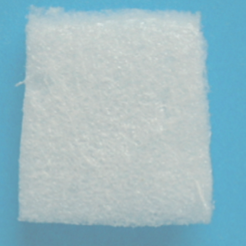44 4.4 The Efficacy of Recombinant Human Collagen
Importance of Findings
 Cardiac remodelling occurs following myocardial infarction (MI) and this change in cardiac morphology can negatively alter the function of the heart. These negative alterations are observed in measures of cardiac function which include contractility, left ventricular ejection fraction, cardiac output, stroke volume, and elasticity (Table 1). Along with this, characteristics such as increased vascularization, increased troponin I, monocyte recruitment and unchanged heart size indicate that a healing environment and cardiomyocyte survival is promoted (Table 2). These observations of cardiac function, morphology and cellular activity were investigated in the study by McLaughlin et al. (2019) to demonstrate if intramyocardial injection of recombinant human collagen (rHC) improves the function of a heart that has experienced a myocardial infarction.
Cardiac remodelling occurs following myocardial infarction (MI) and this change in cardiac morphology can negatively alter the function of the heart. These negative alterations are observed in measures of cardiac function which include contractility, left ventricular ejection fraction, cardiac output, stroke volume, and elasticity (Table 1). Along with this, characteristics such as increased vascularization, increased troponin I, monocyte recruitment and unchanged heart size indicate that a healing environment and cardiomyocyte survival is promoted (Table 2). These observations of cardiac function, morphology and cellular activity were investigated in the study by McLaughlin et al. (2019) to demonstrate if intramyocardial injection of recombinant human collagen (rHC) improves the function of a heart that has experienced a myocardial infarction.
Gaining a better understanding of the measures of cardiac function:
Table 1. The Significance of results from measures of cardiac function in post MI.
Measures of Cardiac Function |
Significance of Findings
|
| Cardiac Output and Stroke Volume | Improved in both rHCI and rHCIII but not in PBS treated hearts. This indicates improved cardiac function by increasing the amount of blood being supplied through the circulatory system. |
| Left Ventricle Ejection Fraction (LVEF) | Recovery of LVEF function indicates improved cardiac function by increasing the amount of oxygenated blood being supplied through the circulatory system. |
| Elasticity | Restored with rHCI and rHCIII immediately after injection indicating lower blood pressure. PBS treated heart had zero recoil indicating decline in cardiac functionality. |
| Contractility | Only rHCI showed better contractility indicating improved function of myocardium. |
Table 2. The Significance of results from morphological and cellular observations in post MI.
Additional Observed Characteristics to Indicate Healing Post- MI |
Significance of Findings
|
| Vascularization | Increased in both rHCI and rHCIII indicating in restoration of cardiomyocyte function as angiogenesis promotes healing. |
| Quantity of Troponin I | Increased in cardiomyocytes indicating restoration of regulatory contraction by myocardium. |
| Monocyte Recruitment | Reduced in rHCI treated hearts immediately after 2 days indicating prevention of inflammation. Ly6C, a marker for macrophages, increased in rHCIII treated hearts indicating inflammation. Inflammation is not ideal as it plays a role in extracellular matrix remodeling which leads to heart failure. |
| Heart Size Post Myocardial Infarction | Hearts treated with rHCI were smaller in size indicating the reduction of cardiac remodelling. |
Current Literature

Chachques et al. evaluated the clinical feasibility of using bone marrow cells to seed biodegradable 3D collagen type I matrix and graft this onto an infarcted ventricle (Figure 1). The purpose of the collagen type I matrix is to promote regeneration in postischemic lesions. This is very similar to the investigation of McLaughlin et al. (2019) using recombinant human collagen I and III to restore the extracellular matrix (ECM) post myocardial infarction as this is important for cardiomyocyte signaling, function, and survival. In the investigation conducted by Chachques et al. (2008), the bone marrow seeded collagen matrix did increase viable tissue in the infarct scar which led to increased support for cardiac wall stress in infarcted regions. Overall, Chachques et al. (2008) found that hearts treated with the collagen matrix had less ventricular remodelling and improved diastolic function. This is consistent with the conclusion made by McLaughlin et al. (2019) that rHCI collagen matrix does improve cardiac function post myocardial infarction and prevents adverse remodelling.
Limitations
Although results demonstrated in the investigation by McLaughlin et al. (2019) is consistent with other existing investigations, this was a pilot study of the use of injectable recombinant human collagen hydrogel. Therefore, some aspects of the topic remain equivocal. The study observed and measured the primary outcomes of cardiac function at only twenty-eight days post treatment (McLaughlin et al., 2019). As a result, long-term effects and efficacy of rHC on cardiac function and morphology remains unknown.
Key Takeaways
- Recombinant Human Collagen I has demonstrated high efficacy in post myocardial infarction through:
- Improved Cardiac Function
- Decreased Inflammation
- Prevents Adverse Remodelling
- There are existing limitations despite high efficacy in the study (McLaughlin et al., 2019)
